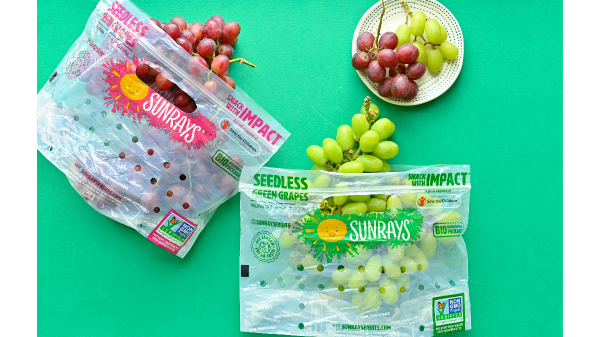
A quick quiz: what’s the difference between “biodegradable” and “compostable”?
“Biodegradable” means that an item will degrade into natural components—eventually. Technically, aluminum cans, Styrofoam cups, and plastic bags are biodegradable, except that the cans take 80-100 years and the Styrofoam and plastic take over 500+ years. That’s why nobody considers them biodegradable under any generally accepted meaning of the term. That’s quite a different scale than for vegetables (5 days to a month), paper (2-5 months), or a cotton T-shirt (6 months).
“Compostable” refers to a product that will biodegrade under specific human-controlled conditions. The simplest example is the backyard compost pile. You take your fruit and vegetable scraps out, dump them on the pile, and every now and then turn it over with a shovel to speed degradation. Products that you can compost that way are called “residentially compostable.”
There is also commercial composting, which uses chippers and grinders to break down refuse, and which require specific moisture, temperature, and oxygen composting.

Under most circumstances, biodegradable plastics are not suitable for residential composting. They require the more complex industrial process to break down.
All of this is increasingly relevant to the produce industry because products are appearing with wrappings that are residentially compostable. Recently a compostable label for bananas was released to comply with French regulations that came into effect at the beginning of this year.
Now New York-based producer distributor Jac Vandenberg Inc. BB #:103960 is introducing a home-compostable plastic bag for its Sunrays line of products. The bags are made from 20 percent biobased plastic and 80 percent compostable polymers. The company claims that these bags will break down in six months in an active compost heap.
“We are confident these bags will help retailers achieve their targets set around zero waste, plastic reduction and overall sustainability,” says Jack Papp, brand manager at Jac Vandenberg.
All well and good if you have a compost heap, but what if your 18th-floor apartment in a big city high-rise doesn’t allow you to keep one?
Then it gets more complicated. Because then that compostable bag, like ordinary plastic bags, probably ends up in landfill, and there is some disagreement about how and even whether compostable materials will break down any differently there. Nor is it clear whether, when they break down, they will release methane, a greenhouse gas that is about 30 times more potent than the notorious CO2.
Current innovations, such as home-compostable materials, are of course praiseworthy efforts to deal with the monumental problem of packaging waste. But I have the strong impression that they are only crude first attempts at the technology that will be needed to solve it finally.
There’s nothing wrong with that, of course; it’s just part of the process—unless you are impatient for faster solutions.
A quick quiz: what’s the difference between “biodegradable” and “compostable”?
“Biodegradable” means that an item will degrade into natural components—eventually. Technically, aluminum cans, Styrofoam cups, and plastic bags are biodegradable, except that the cans take 80-100 years and the Styrofoam and plastic take over 500+ years. That’s why nobody considers them biodegradable under any generally accepted meaning of the term. That’s quite a different scale than for vegetables (5 days to a month), paper (2-5 months), or a cotton T-shirt (6 months).
“Compostable” refers to a product that will biodegrade under specific human-controlled conditions. The simplest example is the backyard compost pile. You take your fruit and vegetable scraps out, dump them on the pile, and every now and then turn it over with a shovel to speed degradation. Products that you can compost that way are called “residentially compostable.”
There is also commercial composting, which uses chippers and grinders to break down refuse, and which require specific moisture, temperature, and oxygen composting.

Under most circumstances, biodegradable plastics are not suitable for residential composting. They require the more complex industrial process to break down.
All of this is increasingly relevant to the produce industry because products are appearing with wrappings that are residentially compostable. Recently a compostable label for bananas was released to comply with French regulations that came into effect at the beginning of this year.
Now New York-based producer distributor Jac Vandenberg Inc. BB #:103960 is introducing a home-compostable plastic bag for its Sunrays line of products. The bags are made from 20 percent biobased plastic and 80 percent compostable polymers. The company claims that these bags will break down in six months in an active compost heap.
“We are confident these bags will help retailers achieve their targets set around zero waste, plastic reduction and overall sustainability,” says Jack Papp, brand manager at Jac Vandenberg.
All well and good if you have a compost heap, but what if your 18th-floor apartment in a big city high-rise doesn’t allow you to keep one?
Then it gets more complicated. Because then that compostable bag, like ordinary plastic bags, probably ends up in landfill, and there is some disagreement about how and even whether compostable materials will break down any differently there. Nor is it clear whether, when they break down, they will release methane, a greenhouse gas that is about 30 times more potent than the notorious CO2.
Current innovations, such as home-compostable materials, are of course praiseworthy efforts to deal with the monumental problem of packaging waste. But I have the strong impression that they are only crude first attempts at the technology that will be needed to solve it finally.
There’s nothing wrong with that, of course; it’s just part of the process—unless you are impatient for faster solutions.
Richard Smoley, contributing editor for Blue Book Services, Inc., has more than 40 years of experience in magazine writing and editing, and is the former managing editor of California Farmer magazine. A graduate of Harvard and Oxford universities, he has published 12 books.




